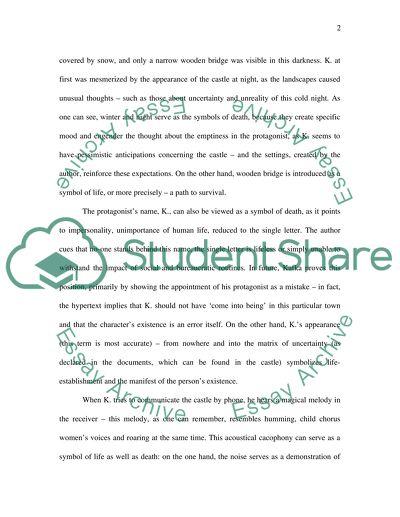Cite this document
(“Franz Kafkas The Castle Book Report/Review Example | Topics and Well Written Essays - 1250 words”, n.d.)
Retrieved from https://studentshare.org/literature/1503203-franz-kafkas-the-castle
Retrieved from https://studentshare.org/literature/1503203-franz-kafkas-the-castle
(Franz Kafkas The Castle Book Report/Review Example | Topics and Well Written Essays - 1250 Words)
https://studentshare.org/literature/1503203-franz-kafkas-the-castle.
https://studentshare.org/literature/1503203-franz-kafkas-the-castle.
“Franz Kafkas The Castle Book Report/Review Example | Topics and Well Written Essays - 1250 Words”, n.d. https://studentshare.org/literature/1503203-franz-kafkas-the-castle.


